Gardening enthusiasts often ponder the roles of various tools in their arsenal. One common question is whether a cultivator can effectively double up as an aerator. This concise piece delves into the intriguing realm of soil cultivation and aeration, exploring the potential crossover between these two essential processes.
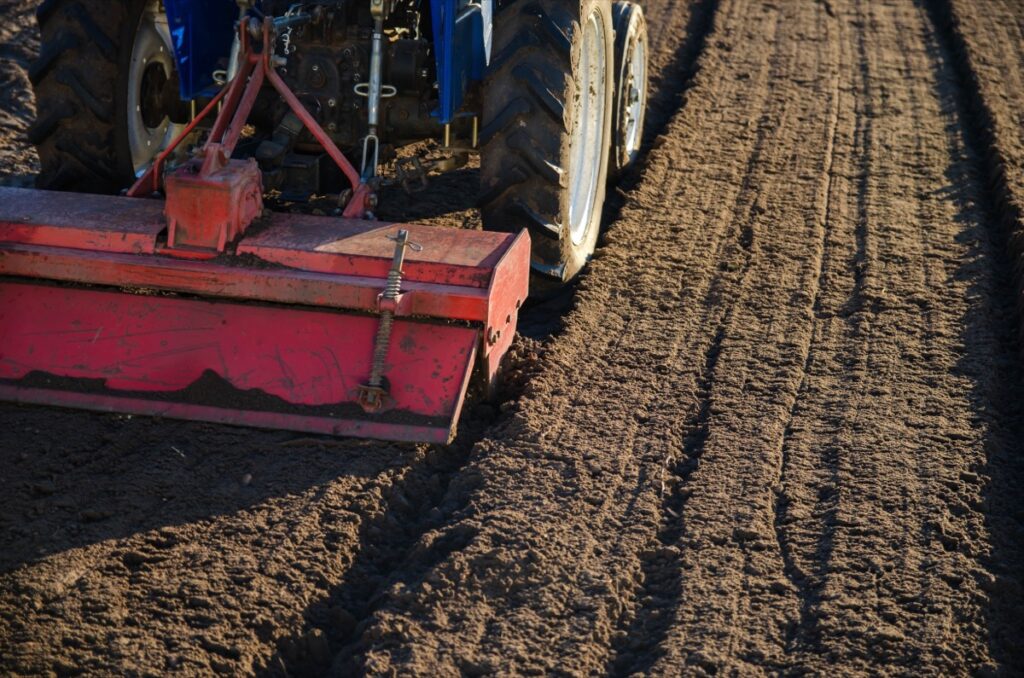
Introduction to Cultivators and Aerators
The symbiotic relationship between soil health and plant growth hinges on crucial practices like aeration and Cultivation. Aeration, the infusion of oxygen into the soil, ignites decomposition processes essential for nutrient cycling. Cultivators, on the other hand, are wielded to refine soil structure and augment its fertility.
Aeration: Glimpse into Vital Oxygenation Aeration transcends mere oxygen infusion; it’s an ecosystem-wide boon. Aeration fosters robust plant cell development by eradicating noxious compounds and augmenting oxygen levels. This method elevates air purity by filtering out pollutants and propelling the disintegration of complex compounds, amplifying nutrient accessibility.
The Cultivator Unveiled Acting as soil artisans, cultivators sculpt the terrain. They embark on aeration-driven missions, enhancing texture, moisture retention, and nutrient endowment. Sporting an array of spikes, these handheld tools perforate the earth, initiating a delicate dance that aerates and invigorates. The resultant soil fertility surge stems from organic matter breakdown, kindling a fertile haven for greenery.
Aeration and Cultivation, The amalgamation of aeration and Cultivation become a harmonious duet orchestrated to yield flourishing harvests. While aeration paves the path for optimal root respiration and nutrition absorption, cultivators refine it further by bestowing fine tilth and structure. An enriched environment is fostered, ripe for seedlings to stretch their roots and thrive.
Understanding the Purpose of Cultivators
Cultivators, integral to agriculture, serve a paramount purpose in soil management. These tools operate as diligent soil architects, transforming the land’s composition. Cultivators enhance aeration and water absorption by breaking up compacted soil and unearthing hidden layers, promoting robust plant growth. This process cultivates an optimal environment for germination, root expansion, and nutrient distribution. Cultivators prepare the soil for planting with precision and finesse, nurturing crop vitality.
Understanding the Purpose of Aerators
Aerators play role in maintaining soil vitality and promoting environmental equilibrium. These devices are designed to infuse oxygen into the soil, facilitating essential processes like decomposition and nutrient cycling. By reducing soil compaction, aerators enhance water infiltration, root penetration, and microbial activity.
In case you missed it: How to Apply for a Tractor Loan in India: Banks, Process, Eligibility, Documents, and Interest Rates
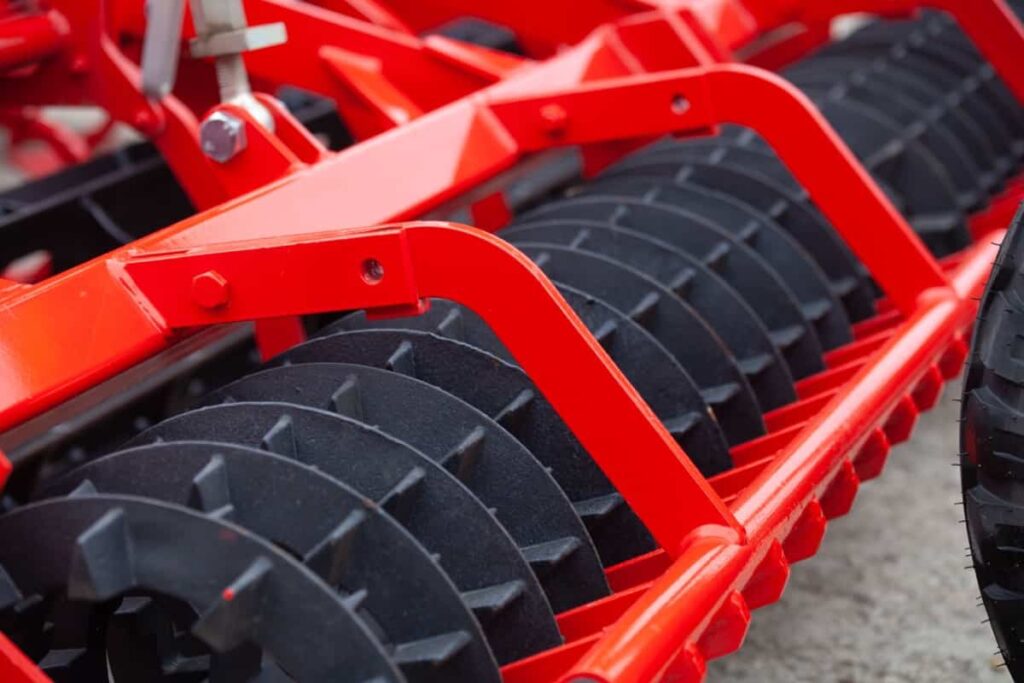
This fosters optimal plant growth by ensuring adequate oxygen supply for root respiration. Additionally, aeration mitigates soil erosion and aids in pollutant breakdown, contributing to overall ecosystem health. Aerators thus act as catalysts for vibrant plant life, sustainable land use, and soil structure and fertility preservation.
Key Differences: Cultivator Vs Aerator
Aeration and cultivation, two essential soil management practices, are responsible for nurturing plant growth and optimizing agricultural outcomes. Aeration involves oxygen infusion to enhance photosynthesis, boosting plant biomass production. Conversely, Cultivation entails physically modifying soil to refine texture and aeration, amplifying nutrient access and root development. Aeration primes the soil’s composition, fostering water retention, nutrient uptake, and organic breakdown.
Meanwhile, Cultivation’s mechanical intervention breaks down organic matter, bolsters nutrient content, and controls weeds, bolstering soil health. Aeration and Cultivation often complement each other, synergizing within farming contexts. Aeration elevates water retention, oxygen availability, and growth stimulation while expulsing excess moisture, minerals, and organic substances. On the other hand, Cultivation’s prowess lies in nutrient augmentation, moisture regulation, and enhancing drainage.
Can a Cultivator Serve as an Aerator?
A cultivator’s breaking up soil clods and enhancing texture indirectly promotes aeration by allowing better air circulation. However, a dedicated aerator introduces oxygen directly into the soil, aiding in root respiration, nutrient uptake, and microbial activity. Cultivators may improve soil structure, but their effectiveness as aerators is limited compared to specialized aerating equipment. To maximize soil health, employing both tools strategically can yield optimal results, combining soil structure enhancement from Cultivation with direct oxygen infusion from aeration.
The Functionality of Cultivators
Cultivators are essential tools in agriculture and gardening, designed to enhance soil quality and promote plant growth. These devices work by loosening and breaking up compacted soil, allowing for better aeration, water infiltration, and root development. Cultivators effectively manage weeds by uprooting them and creating a favorable environment for beneficial soil microbes. With various designs, from handheld to mechanized, cultivators efficiently prepare the soil for planting, facilitate nutrient absorption, and optimize moisture distribution.
In case you missed it: How Sonalika Tractors is Helping Indian Agriculture: Price, Models, and Dealers
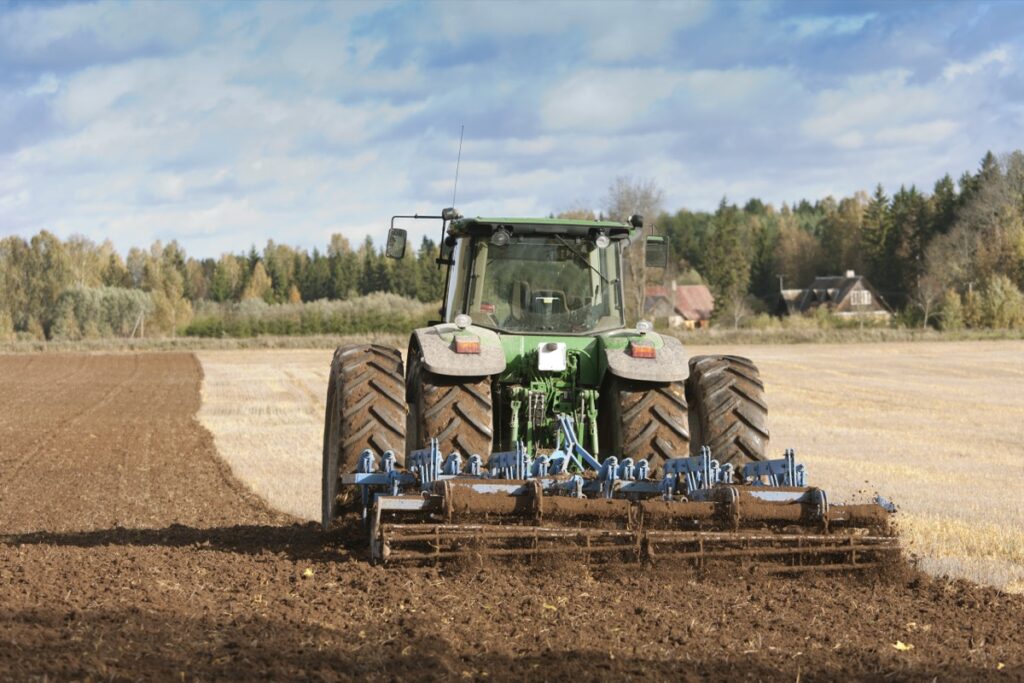
The Functionality of Aerators
Aeration, a crucial agricultural practice, orchestrates the infusion of oxygen and diverse gases into the soil milieu, nurturing optimal plant development. In contrast, cultivators wield their blades with finesse, amalgamating soil through rotary actions. Aeration finds its prime utility in heavy or clay-rich soils, while cultivators thrive in lighter soils. Oxygen’s introduction fosters root expansion and nutrient absorption while disbanding clay and sediment formations, culminating in a crumbly surface conducive to nutrient and water assimilation.
Variants of Aerators Aeration constitute the orchestrated mingling of air with plant surfaces to amplify ventilation, circulation, and drainage. Cultivators, distinctively, initiate soil agitation by rotation, fragmenting clumps and ushering in superior aeration. For plants, aeration boasts multifaceted significance. Enhanced ventilation and circulation ensue, enabling seamless air and water diffusion and alleviating plant stress.
Factors to Consider when Choosing Between a Cultivator and an Aerator
- Soil Type and Condition: Begin by assessing your soil type. Heavy or compacted soils benefit from aeration, while cultivators are more effective on lighter soils. Soil condition, whether hardened or clumped, determines which tool will address the problem more efficiently.
- Purpose: Clarify your goal. An aerator might be more suitable if you focus on soil aeration and improving nutrient availability. A cultivator could be better if you aim to break up clumps, enhance texture, and promote root growth.
- Garden Size: The scale of your gardening project matters. Aerators are advantageous for smaller areas, such as flower beds or vegetable patches, due to their precision and minimal disruption. Cultivators, with their larger tines, excel in bigger spaces like fields.
- Depth of Work: Consider how deeply you need to work the soil. Aerators usually create shallower air pockets, while cultivators can penetrate deeper. A cultivator might be more effective if you intend to cultivate deeper soil layers.
- Weed Management: Both tools contribute to weed control. Cultivators can uproot weeds and prevent their spread, while aerators can hinder weed growth by improving soil conditions for desired plants.
- Frequency of Use: Reflect on how often you’ll use the tool. Investing in a dedicated aerator might be advantageous if aeration is a regular requirement. Cultivators, with their versatile applications, can be a more multifunctional choice.
- Available Equipment: Evaluate your resources. A combination approach might be ideal if you have access to both tools. However, if you need to choose one, opt for the tool that aligns most closely with your immediate needs and gardening practices.
Benefits of Using a Cultivator
- Soil Aeration: Cultivators break up compacted soil, allowing for better air circulation and oxygen exchange, vital for root respiration and nutrient absorption.
- Enhanced Water Infiltration: The loosened soil structure created by cultivators promotes improved water penetration, reducing runoff and enhancing moisture retention for plant roots.
- Weed Control: By uprooting and disturbing weed growth, cultivators help manage unwanted vegetation, reducing competition for nutrients and space among desired plants.
- Nutrient Distribution: Cultivators mix organic matter, compost, and fertilizers into the soil, ensuring even distribution of essential nutrients that foster healthy plant growth.
- Seedbed Preparation: These tools create optimal conditions for seed germination, breaking up clumps and providing a fine, crumbly soil texture that facilitates seed contact with the soil.
- Root Growth Promotion: Improved soil structure enables roots to penetrate deeper, accessing water and nutrients, leading to more robust plant development and increased yields.
- Increased Microbial Activity: Cultivation stimulates beneficial soil microbes, which aid in nutrient cycling, organic matter decomposition, and disease suppression.
- Erosion Prevention: Cultivators mitigate erosion by reducing soil compaction and enhancing soil structure, ensuring the preservation of topsoil and nutrient-rich layers.
- Customization: Various cultivator designs allow for adjusting the tool’s depth and intensity, making it adaptable to different soil types, plant needs, and garden sizes.
- Time and Labor Efficiency: Cultivators expedite soil preparation tasks, saving time and physical effort compared to manual methods, especially in larger gardening areas or agricultural fields.
In case you missed it: How Swaraj Tractors Helping Indian Agriculture: Price, Models, and Dealers
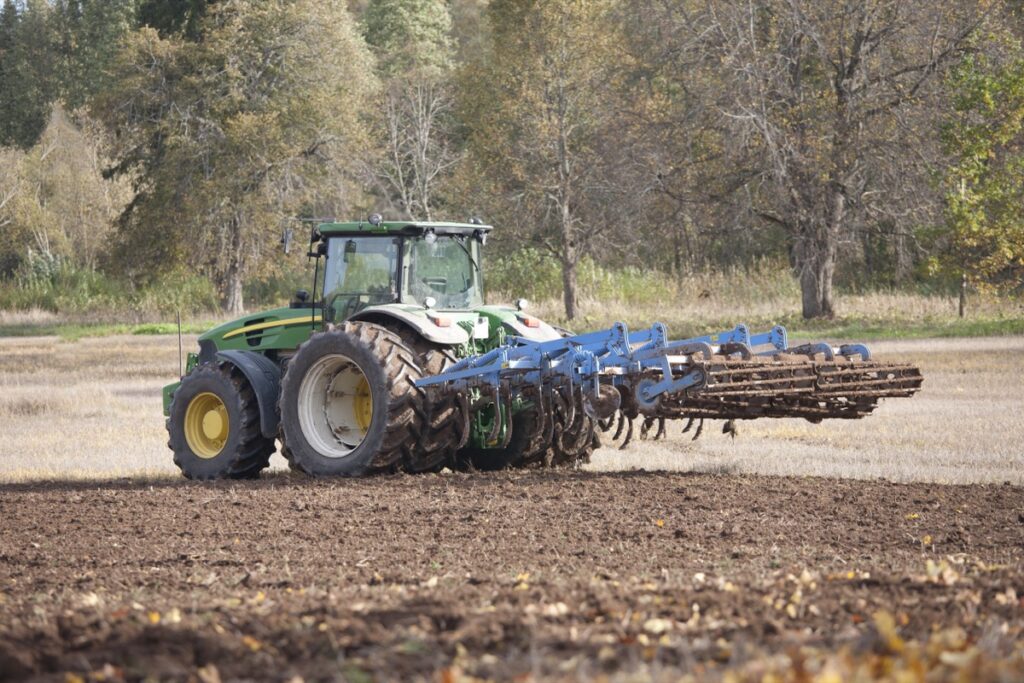
Benefits of Using an Aerator
- Enhanced Aeration: The primary function of aerators is to infuse oxygen into the soil, promoting optimal root respiration. This leads to improved nutrient absorption and plant health.
- Nutrient Accessibility: Increased oxygen levels resulting from aeration enhance nutrient solubility, making essential elements more available to plants for uptake.
- Reduced Compaction: Aerators alleviate soil compaction, preventing excessive densification that can hinder root penetration, water infiltration, and microbial activity.
- Root Growth: Aerators facilitate deeper root growth by creating air pockets and channels, enabling plants to access water and nutrients from various soil layers.
- Water Infiltration: Improved soil structure allows water to penetrate easily, minimizing surface runoff and preventing waterlogging that can stifle root function.
- Microbial Activity: Adequate oxygen levels encourage beneficial microbial populations, promoting nutrient cycling, organic matter breakdown, and soil health.
- Weed Suppression: Aeration disrupts weed growth by creating unfavorable conditions for germinating weed seeds and establishing roots.
- Disease Prevention: Enhanced soil aeration reduces waterlogging, decreasing the risk of root diseases caused by fungi and other pathogens.
- Improved Soil Structure: Air channels and pores create a crumbly soil texture, enabling root exploration and supporting optimal plant growth.
- Enhanced Fertilizer Efficiency: Aeration maximizes the efficiency of fertilizers by ensuring their even distribution, minimizing nutrient leaching, and maximizing plant utilization.
Limitations of Using a Cultivator as an Aerator
While cultivators play a role in soil management, using them as aerators has limitations. Cultivators, designed for soil agitation and clump breakdown, need more precision than dedicated aerators. They might not create sufficient air pockets and channels needed for optimal aeration. Cultivators primarily enhance soil texture and promote root development, but they might not introduce enough oxygen for efficient nutrient uptake and microbial activity.
Aerators, purpose-built for oxygen infusion, create deeper and more consistent air pockets in the soil, aiding plant growth and preventing compaction. Using cultivators as aerators might disturb the soil structure more than necessary, potentially disrupting delicate root systems. Specialized aerators are recommended for effective aeration due to their targeted oxygen delivery, deeper penetration, and minimal disturbance.
In case you missed it: How John Deere Tractors Helping Indian Agriculture: Price, Models, and Dealers
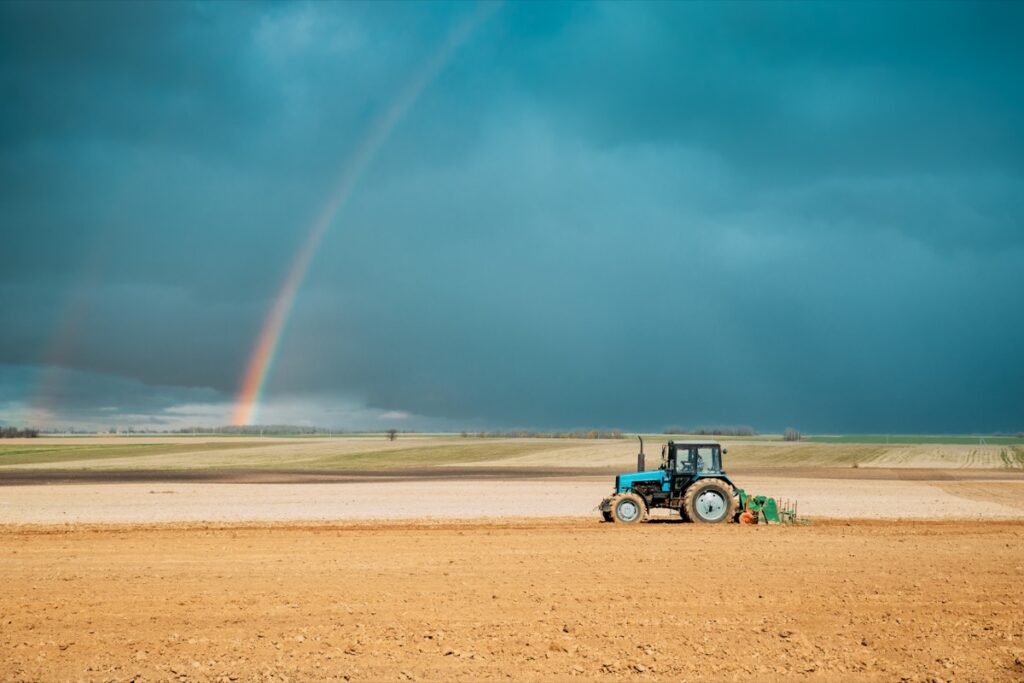
Limitations of Using an Aerator as a Cultivator
While aerators are excellent for improving soil aeration and promoting root health, they are less effective at tasks requiring more aggressive soil disturbance. Their primary function is to create air pockets, and their tines often need to be designed for breaking up compacted soil or mixing it thoroughly. Cultivators, with their specialized blades, are better suited for tasks like breaking up clumps, preparing seedbeds, and controlling weeds. Attempting to use an aerator for these tasks might lead to uneven results and insufficient soil preparation.
Best Practices for Using a Cultivator
- Timing Matters: Choose the right time for Cultivation – preferably when soil moisture is moderate. Avoid working on wet soil to prevent compaction.
- Depth Precision: Adjust cultivator depth based on the intended purpose. Shallow Cultivation is ideal for weed control, while deeper settings aid soil aeration and seedbed preparation.
- Mindful Speed: Operate at a steady pace. Excessive speed may lead to inadequate soil disruption, while slow speeds might cause excessive soil disturbance.
- Overlap Prevention: Overlapping cultivator passes can lead to uneven soil disruption. Aim for a slight overlap to ensure uniform Cultivation.
- Weed Orientation: Cultivate against the direction of weed growth to uproot and control them effectively.
- Moisture Optimization: Target moisture content that enables easy soil crumbling post-cultivation, avoiding excessively dry or wet conditions.
- Blade Selection: Choose appropriate cultivator blades for your purpose – curved blades for surface cultivation and straight blades for deeper penetration.
- Tine Adjustments: Fine-tune tine spacing to prevent excessive soil clodding or over-pulverization.
- Post-Cultivation Care: Monitor weed regrowth and address it promptly after Cultivation. Assess soil condition and consider secondary operations if needed.
- Tool Maintenance: Keep cultivator blades sharp and well-maintained for optimal results, reducing soil compaction and ensuring efficient Cultivation.
In case you missed it: How to Germinate Seeds: Techniques for Faster Germination of Vegetables, Flowers, Fruits, and Herbs
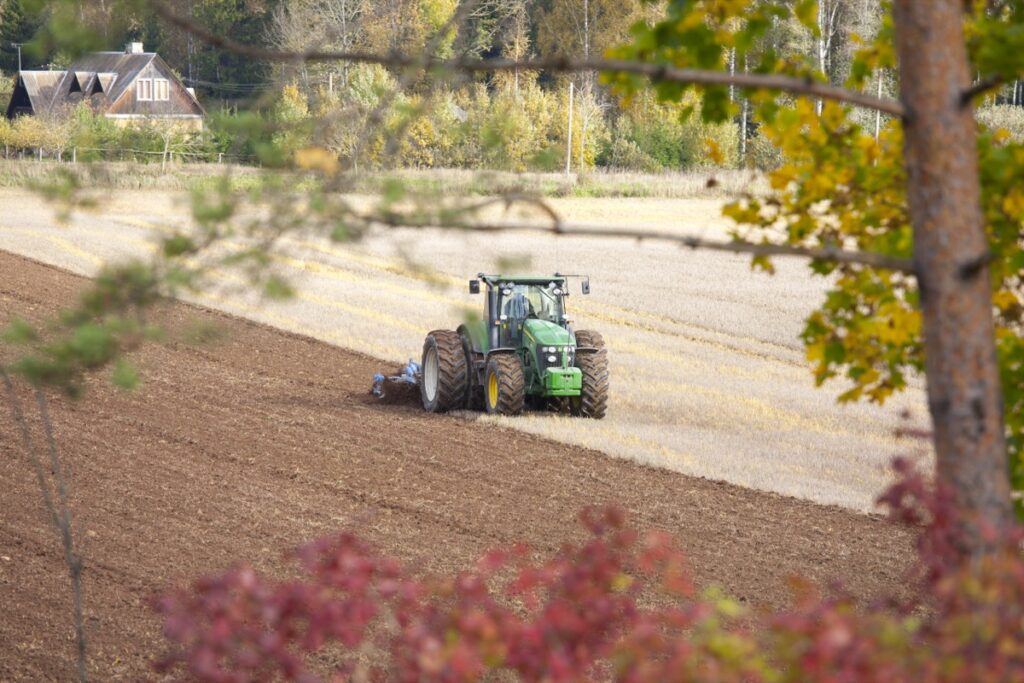
Best Practices for Using an Aerator
Soil type and timing are crucial for effective aeration. Clay soils need careful aeration to prevent compaction, while sandy soils benefit from air channel creation for improved water retention. Aeration should be done in spring or fall when the soil is moist but not saturated. Adequate soil moisture aids aeration, promoting deeper root access to nutrients and oxygen. Aeration depth should be 2-3 inches, and overlapping passes ensure even coverage. Post-aeration care should include overseeding and fertilization. Regular aeration every 1-3 years sustains soil health and plant vitality.
Conclusion
While cultivators and aerators share some soil-enhancing aspects, they remain distinct tools with separate functions. Cultivators break soil clumps and improve texture, while aerators directly infuse oxygen. While a cultivator can partially aid aeration, a dedicated aerator yields optimal results for profound soil oxygenation and enhanced plant growth.
- Crops Grown in Summer Season: Best Choices for Summer Gardening
- Organic Pest Control for Tomato Farming
- How to Maximize Sheep Farming Profit
- Broccoli Varieties: Choosing the Right Cultivars for Your Farm
- How to Raise Pigs in Your Own Backyard: A Comprehensive Guide
- Budget Friendly Sheep Shed Ideas: Cheap and Low-Cost Tips
- How Much Do Cattle Farmers Make: Revenue Streams in Cattle Farming
- Management Pests and Diseases in Your Cotton Field
- Sheep Farming Business Plan for Beginners
- Aquaponic Farming at Home: A Step-By-Step Guide
- Profitable Village Farming Business Ideas in 2024
- High-Yield Aquaculture: Fast-Growing Fish for Farming
- Effective Fish Pond Construction Techniques for Beginners
- Irrigation and Water Management in Pineapple Farming
- Blossom to Harvest: Mastering Flowering and Pollination in Papaya Farming
- Pig Fattening Essentials: From Selection to Sale for Beginners
- Raising Wagyu Cattle: A Complete Guide for Premium Beef Production
- Soil Types and Their Water Holding Capacity
- Optimizing Irrigation Schedules for Coconut Groves for Enhanced Yield
- Espresso Your Garden: Coffee Grounds for Healthier Acid-Loving Plants
- The Best Soil Mix for Snake Plants: How to Mix Your Own Snake Plant Soil
- Green Thumb Success: Expert Tips for Cultivating Greenhouse Beans All Year Round
- Bloom All Year Round: The Ultimate Guide to Indoor Hyacinth Care
- Eco-Friendly Gardening: How to Make Liquid Fertilizer from Kitchen Waste
- Ultimate Guide to Grow Anise in Pots: Explore Seed Propagation to Harvesting
- Guide to Raising Chester White Pigs: Discover Breed Facts to Growth Management
- Mastering the Elegance: The Ultimate Guide to Weeping Cherry Tree Care, Planting, and Maintenance
- Ultimate Guide to Planting Garlic in Grow Bags: Growing Strategies for Beginners
- How to Fix Spider Plant Leaf-Related Problems: Natural and Organic Remedies
- 10 Reasons Why Your Tulsi Plant is Shedding Leaves: Home Remedies and Solutions
- Optimizing Growth and Yield: The Advantages of Palm Bunch Ash Fertilizer
- Utilizing Neem Oil Extract as a Natural Pesticide for Hydrangea
- From Soil to Harvest: Various Ways in Which Farmers Can Use AI Tools
- Steps to Encourage and Induce Citrus Flowers: A Comprehensive Guide
- How to Fix Snake Plant Leaf-Related Issues: Natural and Organic Remedies
- Transform Your Garden into a Fragrant Oasis with Raat Ki Rani (Night Blooming Jasmine)
